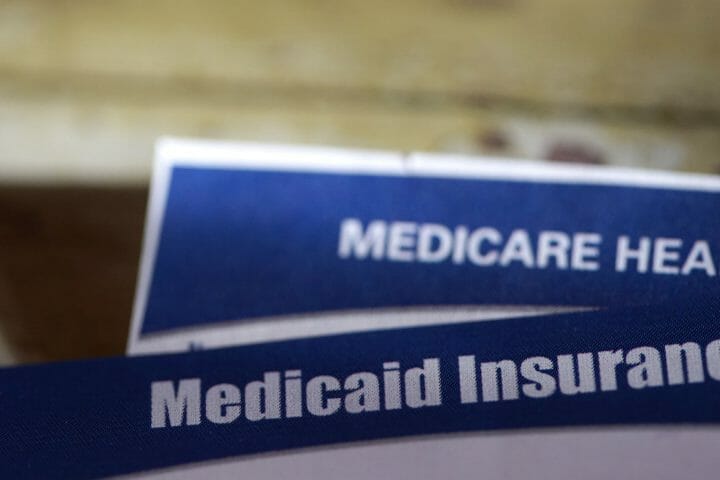Medicare and Medicaid are both health insurance, but the similarity stops there. If you want to know what is the difference between Medicare and Medicaid and how you can be eligible for either of them, read on.
Contents
Medicaid and Medicare are two distinct health insurance programs run by the U.S. government. They are funded and operated by different parts of the government. They serve different types of people.
- Medicare: Medicare is a federal program that provides health insurance for those older than 65 or disabled, regardless of their income background.
- Medicaid: Medicaid is a federal and state-wide program that offers health insurance in the event of low income.
- You can qualify for both simultaneously if you’re eligible. Medicare or Medicaid (dually qualified) will work together to offer you health coverage and provide you with means to support yourself and your family.
This article from team Respect Caregivers will talk about the differences between Medicare and Medicaid. Both provide health care plans administered by the federal government, but there are differences between the covered services and cost-sharing.

Medicare
Medicare is an insurance plan. It is primarily for those older than 65 in the majority, regardless of their earnings, and those disabled and but younger such as dialysis patients.
Trust funds cover medical expenses that those insured have contributed. Patients must pay a portion of the cost through deductibles for hospital expenses and other charges.
The monthly costs for coverage that is not hospital-based are minimal. Medicare is a federal government program. It’s the same across the United States and is run by the Centers for Medicare & Medicaid Services, a Federal government unit.
You might also like to read: How To Check Status Of Medicare Card
Medicare further has four parts:
Part A: Hospitalization Coverage
Medicare Part A covers hospitalization for people aged 65 and over regardless of their income. You or your spouse must have been employed and paying Medicare taxes at least ten consecutive years before being eligible. Most people do not need to pay anything for coverage under part A. However, coinsurance and deductibles are applicable.
Part B: Medical Insurance
The people who qualify to receive Medicare Part A are also eligible for Part B, which covers medically essential equipment and services. This includes doctor’s visits, laboratory work, X-rays, lab work as well as wheelchairs, walkers, and surgeries for outpatients and preventive services like influenza shots and disease screenings.
Individuals who earn over $91,000 in a year ($182,000 for couples) must contribute more money to the program. In 2022, the average Part B contribution was $170.10 (generally taken from Social Security and Railway Retirement payouts). Coinsurance and deductions are also appliable.

Part C: Medicare Advantage Plans
People eligible for Part A and Part B are also qualified for Part C, also called the Medicare Advantage program. Private firms approved by Medicare provide Medicare Part C programs.
In addition to the insurance coverage through Parts B and A, Part C also provides hearing, vision, and dental coverage. It could also offer prescription insurance for drugs.
In this way, it works similar to Health maintenance groups (HMOs) and preferred provider organizations (PPOs), through which many individuals receive medical treatment during their work-related years.
Participating in Part C could lower the cost of buying services individually. Individuals should be aware of their medical needs since Part C enrollees typically have to pay for these services.
You might also like to read: How To Win A Medicare Appeal
Part D: Prescription Drug Coverage
Medicare Part D provides prescription drug coverage. The beneficiaries are required to pay the cost of Part D plans out-of-pocket and are required to pay monthly premiums, an annual deductible, and copays for specific prescriptions.
Participants enrolled in Medicare Part C may only be interested in Part D if their plan does not cover prescription drugs.

Medicaid
Medicaid is a program for assistance to low income households. It assists individuals of all ages who fall below a certain income level. The eligibility is normally decided based on MAGI (modified adjusted gross income).
The 2010 Affordable Care Act (popularly known as Obamacare) majorly expanded the eligibility criteria and included nearly every low income family as well as increase converge to 133% of federal poverty level (FPL) for families with children.
Under Medicaid, patients generally pay no part of the medical expenses. A modest co-payment may be necessary. Medicaid is a federal-state program. It is different between states. Local and state government bodies administer it within federal guidelines.
You might also like to read: What Is Money Follows the Person Program
Who is Eligible for Medicaid?
Medicaid offers health benefits for free or at a low cost to eligible people.
- Adults who earn a low amount of money
- Children
- Women who are pregnant
- Age 65 or older
- People with disabilities
Not everyone qualifies for Medicaid. If your income is lower than the poverty threshold set by your state, you may be eligible. There is also a range of groups required to qualify that include pregnant women, children, and those who receive Social Security Income.
How can I apply for Medicaid?
Visit the State’s Medicaid office to find out whether you and the members of your household are qualified for benefits. It is generally contingent on at the very least one or a combination of:
- Age
- Income level
- The number of people you have in your family
- If you’re pregnant or suffer from a disability

How to Apply for Medicaid and CHIP
Medicaid is a federal and state-wide health insurance program available to people with low incomes.
The Children’s Health Insurance Policy (CHIP) provides health insurance for children. For eligibility, the family of the child must earn an income that is
- Too high to qualify for Medicaid
- Too little to be able to afford private insurance
What help is available through Medicaid?
The people covered under Medicaid do not incur any cost for the covered services. In contrast to Medicare which is accessible to almost all American aged 65 and older, Medicaid has strict eligibility requirements, which vary from state to state.
Once Medicaid recipients reach the age of 65, they’re still eligible to receive Medicaid and are entitled to Medicare as well.
In this case, Medicaid coverage may change depending on the recipient’s income. People with lower incomes may still enjoy all benefits. People with higher incomes could discover that Medicaid covers the Medicare Part B costs.
You might also like to read: Will Medicare Pay For A Walk In Tub
The Impact of The Affordable Care Act, 2010
Through the Affordable Care Act (ACA), President Barack Obama attempted to expand health coverage by extending healthcare coverage to nearly every American below the federal poverty line.
The state and the federal partnership resulted in creating different Medicaid programs for every state. This means that all citizens and legal residents from the United States with incomes 138 percent below the poverty line are eligible for coverage in Medicaid states that participate.
Although the ACA has helped increase the federal funding and the eligibility requirements for Medicaid, the Supreme Court ruled that states do not have to take part in the expansion to continue receiving previously set Medicaid funds levels. This is why some states have chosen not to increase the amount of funding or eligibility rules.
What is the CARES Act?
The CARES Act was brought into being by President Trump on March 28, 2020, and it further expanded coverage. The $2 trillion stimulus package ensured that Medicare coverage is expanded to include Americans affected by COVID-19.
It improved flexibility for healthcare by allowing for more healthcare services through telehealth. It also provides more telehealth services. CARES Act allows Medicaid programs in states that are not expanding to cover individuals who are not insured under COVID-19 requirements.
You might also like to read: What is the Medicaid CHIP Program
A Few Final Words
Medicaid and Medicare are different types of insurance, meant for diferent purposes. Medicaid is a form of low income healthcare coverage. Medicare is a form of universal coverage for the elderly and disabled. The qualifying criteria, income criteria and applicable benefits are very different from each other.
If you are eligible, you can actuall get benefits from both programs simultaneously as well. We hope this article was able to give you all the information that you need to understand your eligibility and to get the benefit from these two programs
